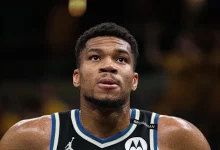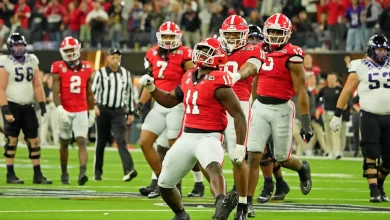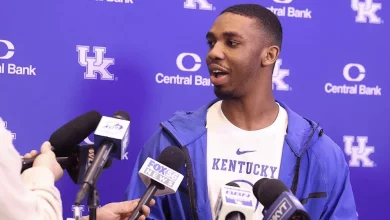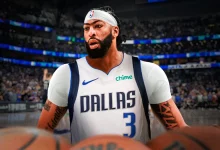Preston Greene is hired by Duke men’s basketball as the director of sports performance
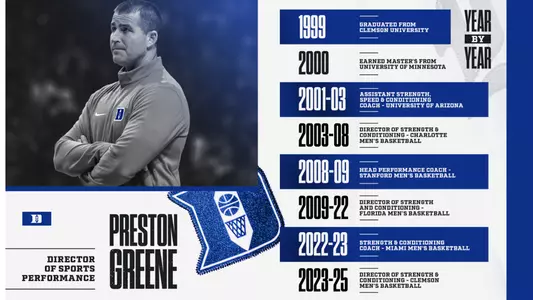
In a move that underscores Duke University’s commitment to elite-level basketball performance and player development, Preston Greene has officially been hired as the Director of Sports Performance for the Duke men’s basketball program. This strategic hire is expected to significantly enhance the physical preparation, injury prevention, and long-term athletic development of Duke’s student-athletes.
Greene’s arrival comes at a critical time for the Blue Devils, who are not only building a new era under head coach Jon Scheyer but also looking to re-establish themselves as the most dominant force in college basketball. With Greene’s decades of experience and deep understanding of high-performance training, Duke has made a powerful statement: excellence is expected, and every edge matters.
Who Is Preston Greene?
Preston Greene is one of the most respected names in the world of strength and conditioning. A performance specialist with more than 20 years of collegiate experience, Greene has spent his career optimizing athletic performance at the highest levels.
Before joining Duke, Greene was best known for his 11-year tenure as the Director of Strength and Conditioning for the Florida Gators men’s basketball program, where he worked with head coach Mike White and, prior to that, Billy Donovan. During his time in Gainesville, the Gators made multiple NCAA Tournament appearances and were regularly among the top defensive and rebounding teams in the country.
Greene’s philosophy centers on evidence-based training methodologies, injury prevention, and maximizing player longevity—qualities that perfectly align with the rigors and expectations of Duke basketball.
Career Highlights
- University of Florida (2011–2022): Greene helped produce numerous NBA-ready players and implemented performance programs that emphasized speed, agility, strength, and mobility.
- Stanford, Clemson, and Charlotte: Before Florida, Greene held key positions at other top programs, working across sports and learning how to build performance systems from the ground up.
- NBA and Pro Training Experience: Greene has trained players preparing for the NBA Draft and has consulted with pro franchises on best practices for year-round athlete development.
His resume speaks to both his adaptability and his ability to scale programs depending on team needs and resources.
Why This Hire Matters for Duke
Duke Basketball has always been synonymous with excellence, but in the modern college basketball landscape, physical performance has become as crucial as skill development. With longer seasons, more athletic competition, and higher stakes in both college and professional transitions, programs that invest in sports science and performance infrastructure gain a competitive advantage.
Here’s why Greene’s hiring is a major development for Duke:
1. Player Development
Jon Scheyer is building a program centered around both winning and preparing players for the NBA. Greene’s track record in developing NBA-caliber athletes will make Duke even more attractive to recruits who want elite performance training as part of their path to the pros.
2. Injury Prevention and Recovery
Duke’s recent seasons have seen key injuries at critical points. Greene’s systems are built around minimizing risk through movement screening, individualized programs, and high-tech monitoring tools. His arrival could mean fewer games lost to injury and faster recovery times.
3. Competitive Edge in Recruiting
Programs like Alabama, Kansas, and Kentucky have all made significant investments in performance departments. With Greene on staff, Duke can now point to a proven leader in this space when pitching development pathways to elite high school and transfer athletes.
4. Data-Driven Performance
Greene is known for integrating sports science, wearable tech, and force plate analysis into daily training. This means Duke players will benefit from real-time feedback and customized training, helping them peak when it matters most.
What Greene Brings to the Table
Holistic Approach
Greene doesn’t just focus on lifting weights. His approach includes mobility, nutrition, recovery protocols, and even sleep optimization. He works closely with athletic trainers, physical therapists, and nutritionists to build a 360-degree plan for each player.
Customized Training Plans
One of Greene’s trademarks is creating position-specific and player-specific programs. A 7-foot center isn’t trained the same as a 6-foot point guard. Under Greene, every Blue Devil will have a tailored program that aligns with their role and goals.
Emphasis on Longevity
Greene has spoken at national conferences about the importance of preserving athleticism over time. This is especially relevant for players like Duke’s one-and-done freshmen, who need to make an immediate impact while staying durable.
Inside the Weight Room: What Changes Fans Can Expect
Greene’s presence will be most felt in Duke’s upgraded training facilities. While the public doesn’t often see the inner workings of the sports performance department, the results will be visible on the court.
Here’s what fans might notice over time:
- More Explosive Athletes: Improved verticals, sprint speed, and lateral quickness
- Better Conditioning: Players maintaining high energy and focus deep into March
- Lower Injury Rates: Especially soft-tissue injuries and non-contact injuries
- More Durable Stars: Key players staying healthy throughout the season
A Word from Coach Jon Scheyer
Duke head coach Jon Scheyer praised the hire in a university statement, saying:
“Preston Greene is one of the best in the business. His reputation, his integrity, and his experience developing elite athletes will take our performance program to the next level. Our players will benefit from his leadership every single day.”
Scheyer emphasized that Greene would play a key role in preseason preparation, in-season maintenance, and NBA Draft readiness—a full-season approach designed to meet the needs of modern players.
The Players React
While official reactions from current players have been limited, sources close to the program indicate that Duke players have already begun working with Greene during offseason conditioning.
One team insider shared:
“The vibe has changed. Preston’s sessions are intense, but the guys are locked in. He’s already gaining respect in the room.”
Freshmen entering the program, including high-profile recruits like Cooper Flagg, will likely see Greene as a crucial part of their development path.
Broader Implications for College Basketball
Duke’s hiring of Preston Greene is part of a larger trend in college athletics—one where performance directors are becoming as important as assistant coaches. The days of strength coaches simply running sprints and bench press routines are over.
In this new era, sports performance experts:
- Analyze movement patterns to predict injury risks
- Use GPS tracking and load monitoring to adjust practice intensity
- Collaborate with nutritionists and psychologists to support total athlete well-being
With Greene on board, Duke is embracing this model fully—and setting a new standard for ACC programs.
What Comes Next
Greene has hit the ground running, with summer workouts and preseason planning already underway. His first full season with Duke will be a key testing ground for how his systems translate into performance gains.
Key areas to watch:
- Strength gains in returning players like Jared McCain and Tyrese Proctor
- NBA Combine metrics for players entering the draft
- Injury rates and conditioning levels deep into ACC play
- Development curve for incoming freshmen and transfers
Hiring Preston Greene is more than a personnel decision—it’s a championship move by a program that refuses to rest on its past success. In the high-stakes, high-visibility world of college basketball, every edge counts. Greene gives Duke a serious edge.
As Duke gears up for another title run, Greene will be working behind the scenes—redefining limits, pushing boundaries, and preparing the next generation of Blue Devils to perform when the lights are brightest.

